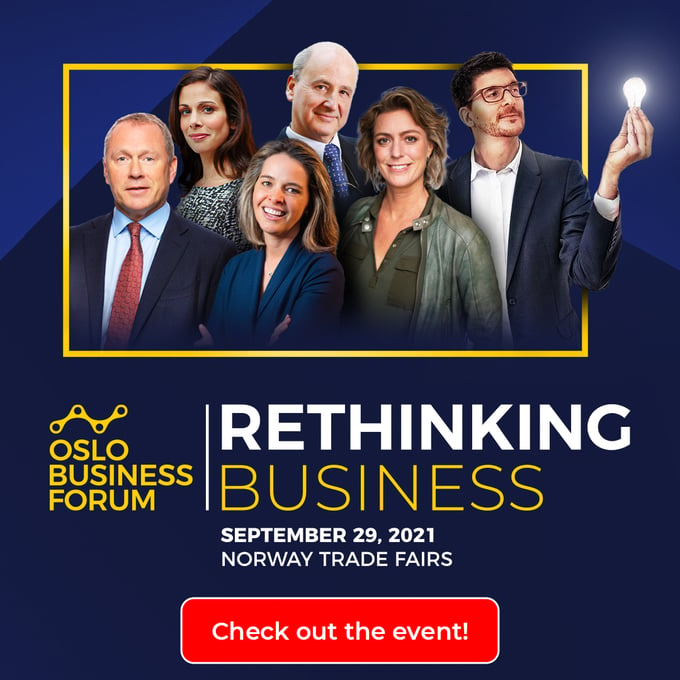The COVID-19 pandemic has heightened uncertainty for us as leaders, for our employees, clients, and businesses. The businesses that thrive in times of uncertainty are typically the ones that operate with high trust levels with their stakeholders.
This makes sense in theory; the greater the trust in your relationships, the easier it is to work with others. But, from a practical perspective, how can you earn trust, especially during challenging and uncertain times?
We’ve invited Rachel Botsman, author and Trust Fellow at Oxford University, to speak at the forum on this topic based on her research in the last decade. In the following article, we’ll outline some practical ways to think about trust in your organization, with commentary from Arild Spandow, CEO Amesto, who provides a Nordic perspective on the insights.
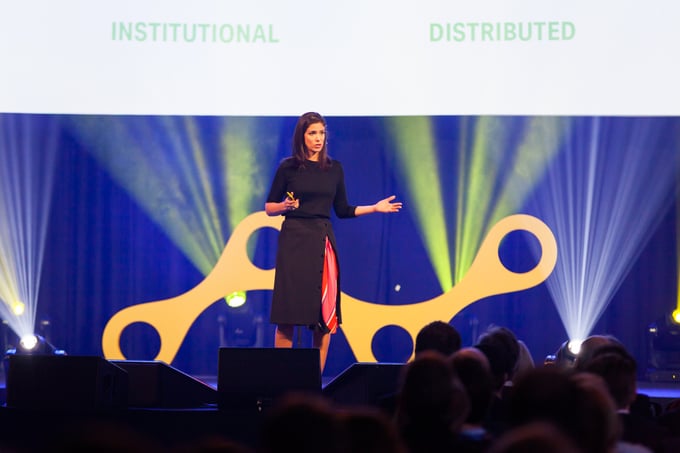
The Need for Trust During a Crisis
A crisis can make or break your long-term relationships with employees and customers. Botsman explains that people turn to leaders and companies that connect with their needs and show genuine empathy and integrity during these times.
Botsman has researched trust for over a decade and worked with numerous Fortune 500 companies to share her insights, inspiring them to rethink what trust is and why it's critical during times of uncertainty.
Trust is highly subjective and contextual, so when discussing trust, we should always question the context first by asking, "trust them to do what?" For example, as a business leader, you may trust your Finance Director to run your company's financials. You may not trust the same individual to advise you on your employment contracts.
Botsman explains that in the same way that money is the currency of transactions, trust is the currency of interactions. Organizations typically find money a lot easier to talk about because they find it more tangible. However, the organizations that only talk about money will only go so far. Trust must come first.
A leader who understands this concept well is Marc Benioff, CEO of Salesforce, who said, "Trust has to be the highest value in your company. If it's not, something bad is going to happen."
Botsman encourages organizations to make decisions through a trust lens rather than a money lens. It's only when trust disappears that it becomes apparent to business leaders why trust needs to come first.
Spandow said, “Trust is the foundation for business success. In the Nordic region, individuals are more predisposed to trust than in other parts of the world. Trust is part of the expectation when you buy from a company or join one as an employee.
At Amesto, we’re a family-owned business, which I believe adds another level of trust to how we operate. Our surveys show we experience higher levels of trust from customers and employees than is seen in a private company. Being a family business seems to add another layer of trust.”
Defining Trust
Trust has so many definitions, but ultimately it comes down to a feeling. Botsman describes trust as a "confident relationship with the unknown." For example, you may have a direct report who you implicitly trust to deliver significant projects because you know they will deliver to the time and quality you expect. Without this trust, you would feel compelled to stay closer to the deliverables and may start micro-managing.
As business leaders, trust helps us bridge the uncertainty of moving from a known situation to the unknown, requiring what Botsman describes as a "trust leap."
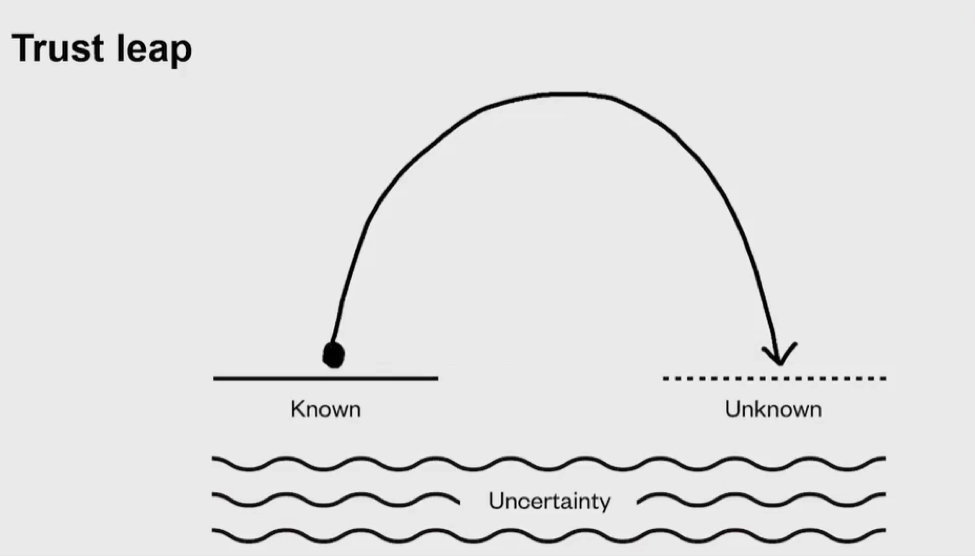
Trust leaps are required when we face a new situation, or we need to do something differently. For example, society has been through a massive shift in which we've moved from a cash-based society to digital payments. The pandemic has led to trust leaps in many forms. For example, physical businesses had to cease trading in many countries or move online during the peaks of the pandemic, and many children received their education at home.
These trust leaps can come with fear and anxiety.
As a leader, when you ask your employees to make a trust leap of any magnitude, it’s critical to consider what trust state the individuals are in currently. Botsman brings this point to life in the following diagram.
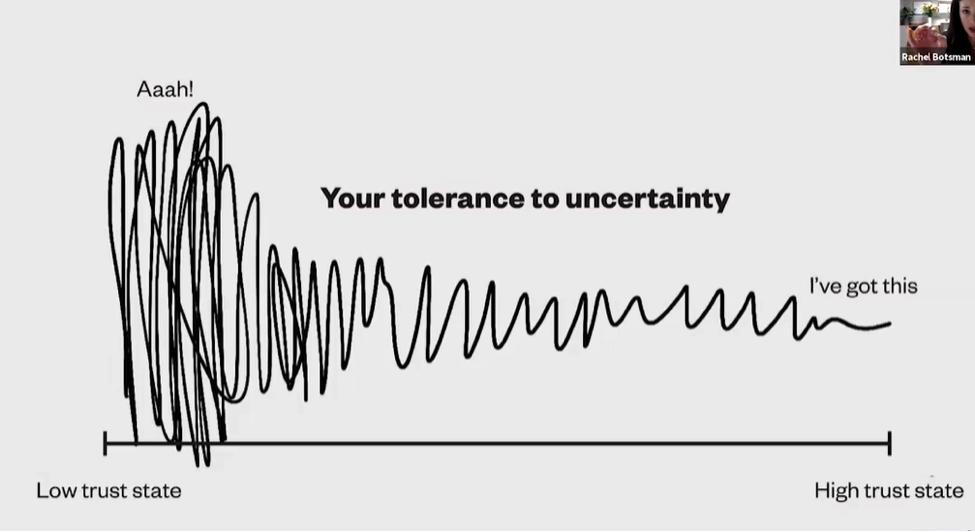
Individuals currently in a low trust state will have a far more emotional reaction to uncertainty than those in a high trust state in a specific situation or on a particular day. You can identify the signs that someone is in a low trust state by looking out for signals such as asking for more information than is typical, or requesting more involvement in something, or seeking greater control.
Once you have identified your audience's trust state, it's vital to adapt your behavior and communication style to their needs.
Botsman explains that individuals in a low trust state will look for ways to regain their sense of control of the situation during times of uncertainty.
Spandow noted the trust leaps that have been required within companies in the Nordic region during the pandemic. “We trusted our people to work from home without steady supervision. Across the Nordic region, many companies have experienced higher productivity and increased employee satisfaction throughout this period. Companies have built upon the trust foundations they already had in place – the high trust state inherent in our culture - to operate during this time of greater uncertainty.
We’ve learned that physical presence is not as important as we first thought as long as we have clear communication in place. In my experience, this came reasonably naturally to our managers. They rose to the occasion, and we trusted then to act in the best interests of the firm, without needing to invest in extensive training.”
Making Choices Under Uncertainty
When an individual faces an unknown, they have two choices. The first is to reduce the impact or the likelihood of the unfamiliar situation happening. For example, if an employee is worried about losing his job, he may decide to save up six months of his expenses to reduce the financial severity of being out of work.
The second choice involves increasing an individual's tolerance for uncertainty. This approach is challenging because, culturally, from a young age, we are taught to avoid or minimize risk. However, Botsman shares three practical tips for increasing an individual or group's tolerance to uncertainty during a crisis, based on her research.
Tip One: Set Clear Expectations
Setting clear expectations sounds so simple but is a step that many leaders miss or dial down in an effort not to hurt another's feelings or cause them concern. It's vital to be clear about what you expect from others and then have them replay that to you through a feedback loop so you can be confident they have received and understood your message.
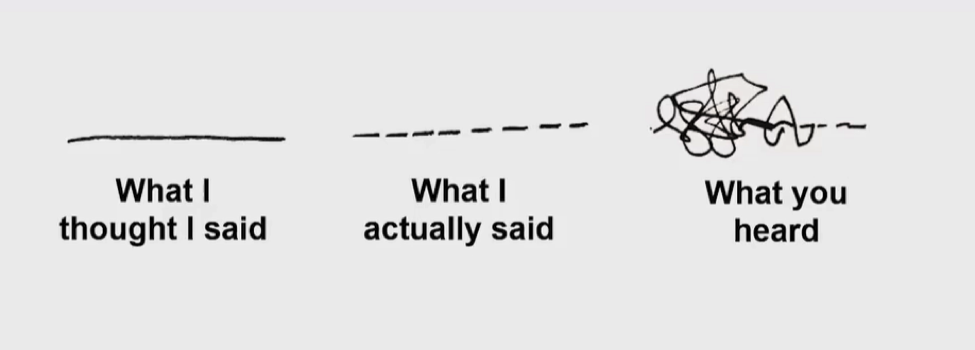
Spandow shared that “At Amesto, we are setting a clear vision and give every employee the opportunity and responsibility to deliver it, essentially democratizing decision-making. We want each employee to know and understand the three pillars of our mission – people, profit, and planet – so they are clear on the expectations we have for them and how they will be assessed and rewarded.”
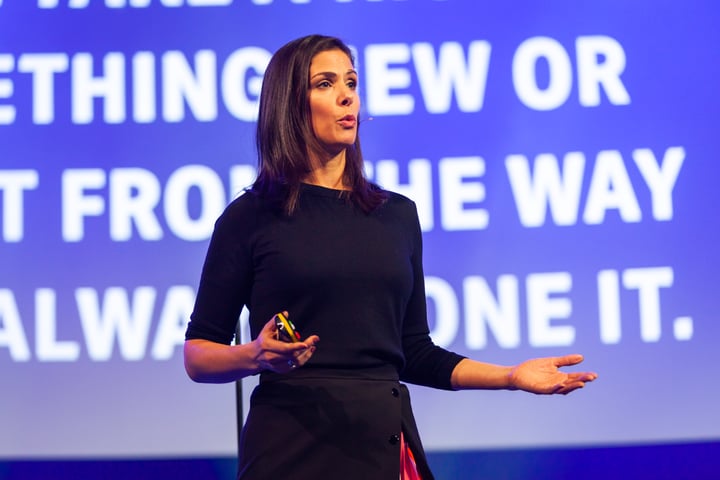
Tip Two: Focus on Integrity, not Transparency
Botsman openly shares her concerns that many organizations are trying to fix trust issues through transparency. It’s what we’ve all been told - transparency increases trust.
However, when you start to think of trust as a confident relationship with the unknown, efforts to build trust through transparency can suddenly appear less effective. For example, will cc’ing your entire team on every email really build trust?
Botsman explains that transparency reduces the need for trust because you are lessening the unknown, which requires less of a trust leap. Secrecy is not the enemy of trust; the enemy of trust is deception which transparency does little to guard against.
Botsman recommends that organizations and individuals focus on integrity as a means of earning trust from their stakeholders. Leaders can do this by asking themselves one powerful question, “Do my motives and interests in this situation align with the best interests of the other party?”
When asked about integrity and transparency in the Nordic region, Spandow said, “Integrity and predictability are important pillars of trust in our society. At the same time, transparency is an essential part of how we operate, and all three pillars contribute to the inherent trust within our society and culture. It’s the Nordic culture to start from a basis of trust, but trust is hard to build and easy to lose and will disappear if individuals or companies do not act according to expectations.”
Tip Three: Turn Empathy into Acts of Caring
Botsman explains that there is a difference between asking someone how they are and asking how you can help them.
Acts of caring and kindness enable you to turn empathy, understanding another's feelings, into action that helps them. These acts allow you to earn their trust over time.
“At Amesto, we are setting a clear vision and give every employee the opportunity and responsibility to deliver it, essentially democratizing decision-making. We want each employee to know and understand the three pillars of our mission – people, profit, and planet – so they are clear on the expectations we have for them and how they will be assessed and rewarded.”
- Arild Spandow

Earning Trust
Botsman concludes that as leaders, we must earn trust from others through consistent actions over time.
We can earn trust through how we show up, how we set clear expectations, demonstrate integrity, and deliver acts of caring. These are the ingredients for creating trusting environments.
See Erin Meyer live at Oslo Business Forum "Rethinking Business", September 29, 2021!


